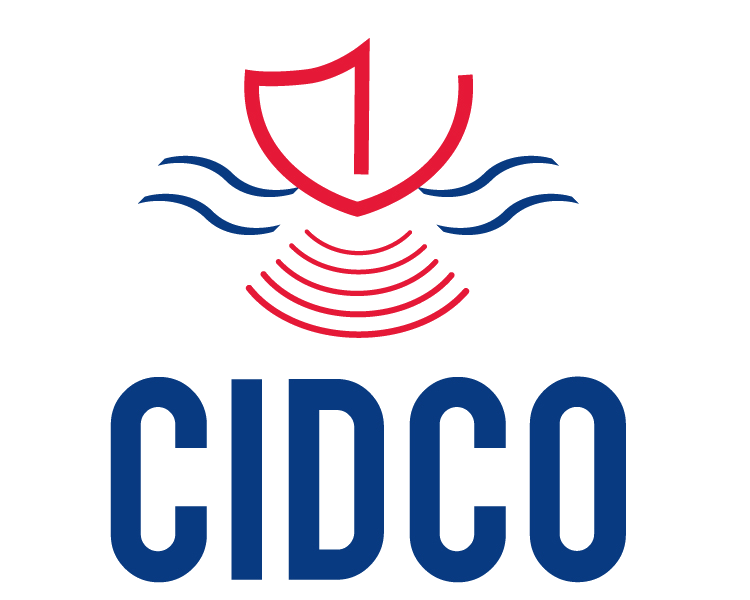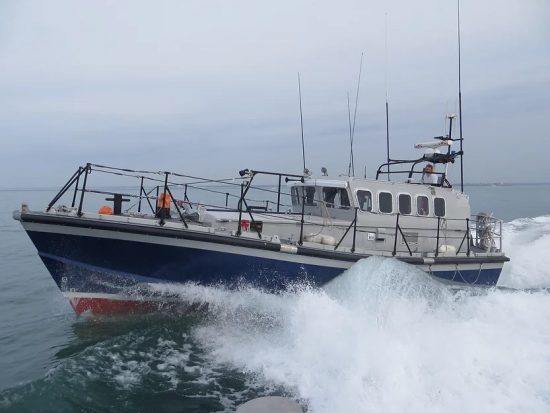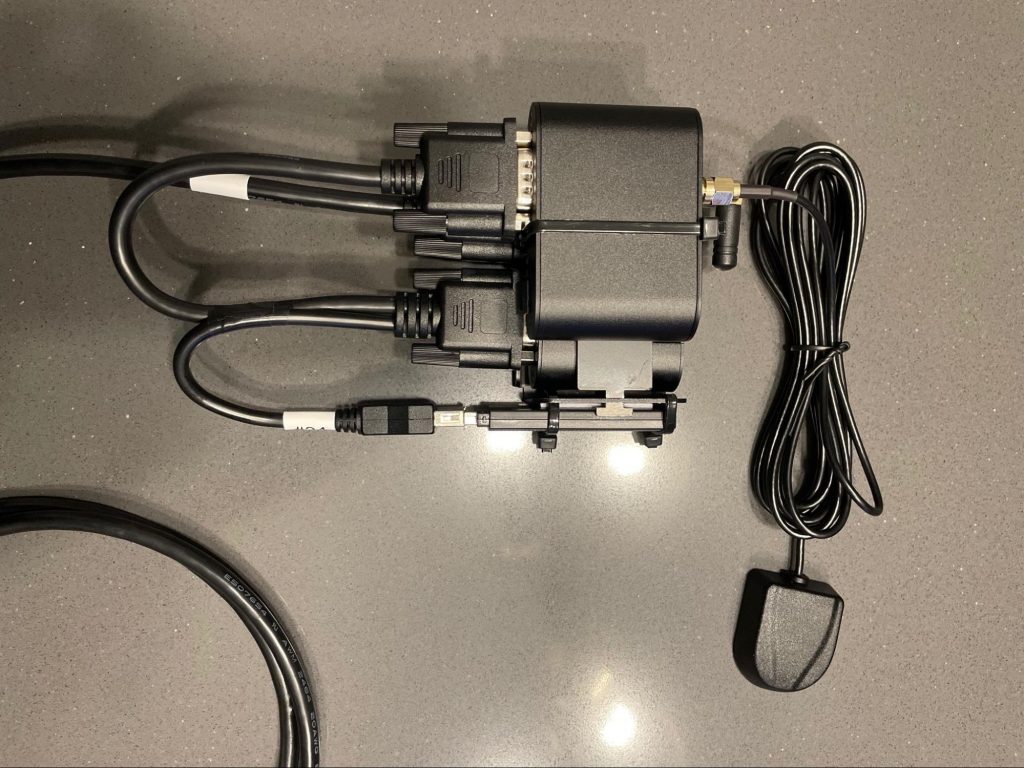Great lakes mapping
To help complete an open, high-density map of the lakefloor as part of Lakebed 2030, the Great Lakes Observing System (GLOS) is developing a pipeline for a largely untapped source of lakefloor depth data: crowd-sourced bathymetry (CSB).
CSB is collected by non-research vessels, using standard navigation instruments that measure lake depth while engaged in routine maritime operations, whether that’s going out on a fishing trip in Lake Ontario, or transporting cargo across Lake Superior.
To make this easier for boat operators, GLOS funded Orange Force Marine to create the Mussel Kit—a small device that plugs directly into a boat’s electronics, connecting to onboard singlebeam echosounders that are part of fish finders or other navigation equipment. As the boat travels the lake, the device automatically sends depth, location, and other data to GLOS where it will be used as part of a publicly-accessible, continually updated map of the lakefloor.
And because GLOS was recently certified as a trusted node with the International Hydrographic Organization (IHO), data from participating boats will be shared with NOAA as part of the IHO Crowdsourced Bathymetry initiative.
Orange Force Marine’s Orange Apex vessel was one of the first to begin using the Mussel Kit.
Several boats are already equipped with Mussel Kits, and Derek Niles, founder of Orange Force Marine, plans to add to several more boats by next summer. The team has already gathered some data around Port Stanley, Ontario on Lake Erie and Pickering, Ontario on Lake Ontario
Research is currently underway to understand how accurate CSB data can be, but early indications are that, given enough vessels collecting CSB in one area, this data could be usable for most common applications of bathymetry like navigation, exploration, and habitat assessment. Once data reaches GLOS, data analysts will assess the data quality and begin ingesting, post-processing, and gridding it.
To learn more about efforts to map the lakes, visit lakebed2030.org and sign up for email updates.
The Mussel Kit attaches to standard onboard electronics on many non-research vessels and can use a cellular antenna or connect to WiFi onboard or when the vessel returns to the dock.
These palm-sized devices allowed the participating vessels to contribute crowdsourced bathymetry (CSB) data to a centralized database, eventually contributing to the shared Great Lakes lakebed map.
“Mussel Kits” were designed and built by Orange Force Marine, a survey and specialized marine services company based in Port Stanley, Ontario. Founders Derek Niles and Colin Thomson have built 24 kits and have begun installing them on volunteer “vessels of opportunity”—vessels equipped with adequate navigation systems and that regularly travel throughout the Great Lakes.
As a vessel navigates, the Mussel Kit, working alongside the echo sounder collects a series of points file containing:
- Latitude and longitude
- Depth
- Date and time
- Vessel information
As the on-board single beam echosounders scan far less of the lakebed than expensive survey-grade multi-beam or side-scan sonar devices on survey vessels, crowdsourced bathymetry works at scale by:
- Putting dozens or hundreds of low-cost kits on boats,
- Transmitting data automatically to a centralized hub,
- Over time, as vessels traverse the same section of the lake time and again, combining the data to create a high-density surface of the lakebed.
Once Orange Force Marine determines that a vessel is a good candidate for a Mussel Kit based on the electronics configuration and sailing profile, they install the kit, calibrating each based on the vessel’s sensors and dimensions, and then watch the data come in as the vessel goes about it’s daily business on the Lakes. The Mussel Kit collects and uploads the data in the background so boat operators have no extra work. Every few weeks, once the data has been quality controlled, it appears on the DCDB.


